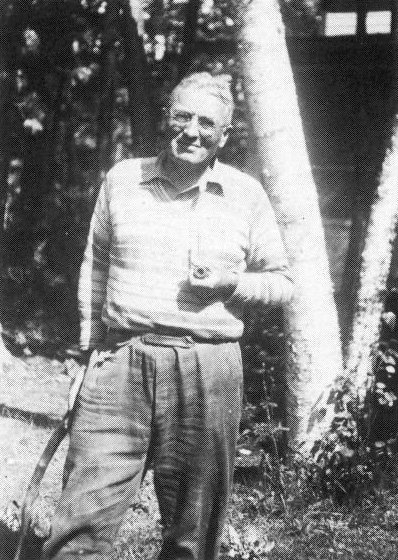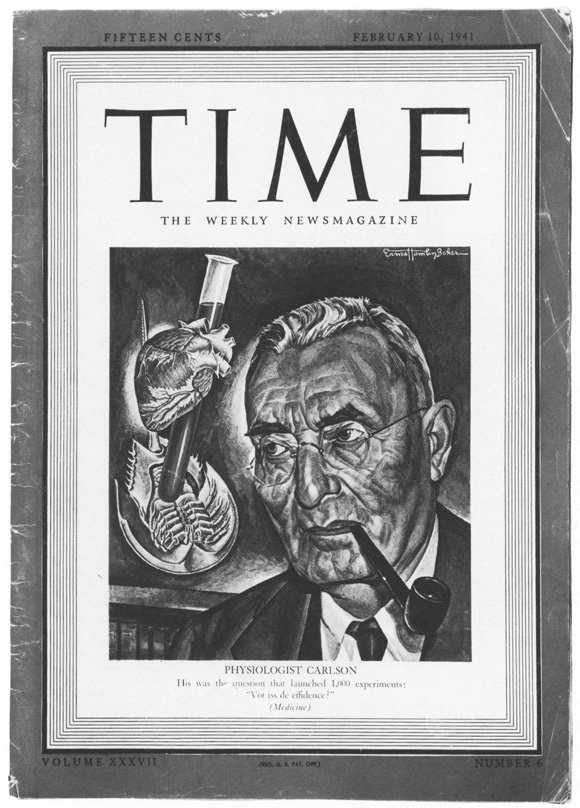Anton J. Carlson (1875-1956): Physiology
As part of his search for a more complete knowledge of the stomach and the relationship between hunger and digestion, Carlson once fasted for fifteen days with a balloon crammed into his stomach to measure its contractions. His experiment helped disprove one of Pavlov's classic theories by showing that gastric juices flowed regardless of the amount of food in the stomach. Carlson went on to argue that hunger was an independent, nonconditioned response.
Utterly devoted to empirical research, Carlson often reacted passionately to presentations he found insufficiently supported by evidence. His standard question, posed in a thick Swedish accent - "Vot iss de effidence?" was applied to everyone, both inside and outside the scientific world. Carlson's empiricism did not endear him to everyone. While in college studying for the Lutheran ministry, he suggested that the question of the efficacy of the power of prayer could easily be tested. Congregations could be asked to pray for rain and the results of their efforts could then be compared with the Weather Bureau's rainfall records. This philosophy won him little support within the church and prompted his shift from theological studies to the natural sciences.
As a faculty member, Carlson defended empirical research and opposed what he considered the Neo-Thomist views of President Robert M. Hutchins. Carlson once remarked that if Hutchins had lived three hundred years earlier, he would have been a monk in a monastery.
A. J. Carlson combined sound
scholarship with a sense of the dramatic and a flair for knowing how to
capture the attention of an audience. Carlson not only taught well within
the classroom, but also recognized student talent and knew how to cultivate
it. Franklin McLean recalled how as a student, he had collaborated with
Carlson on an experiment. When the published results appeared, Carlson
had McLean listed as the sole author, a generous gesture that McLean never
forgot. His crusty personality, blunt approach, and willingness to entertain
made Carlson well known, but they did not overshadow his many contributions
to science and medicine.


